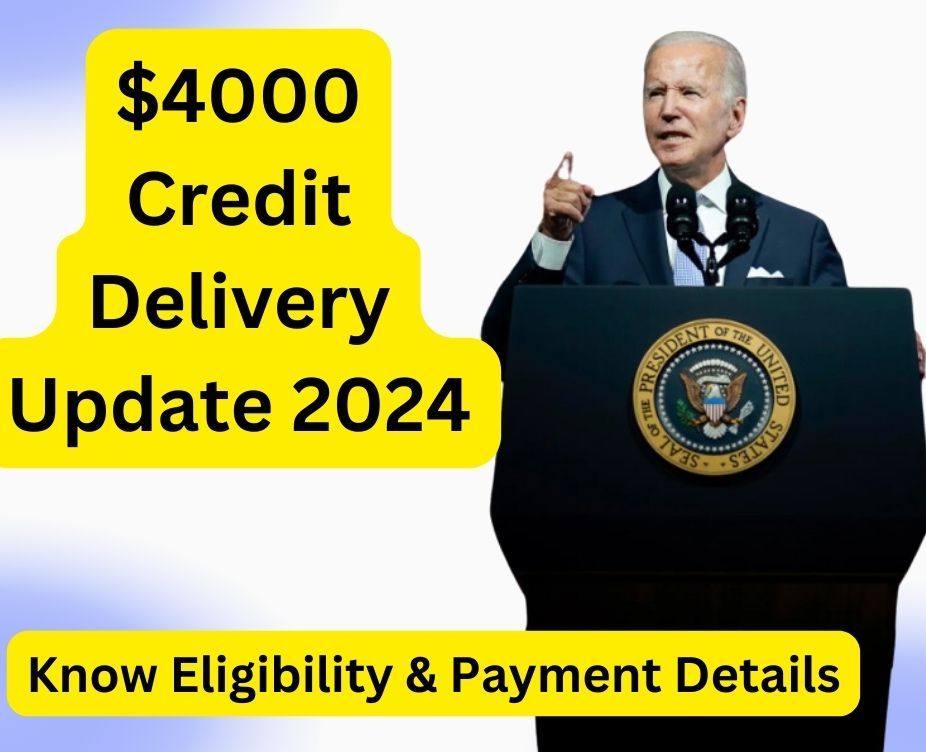Assembly Bill (AB) 1023, currently known as 2023 Wisconsin Act 101, was signed into law by Governor Tony Evers in La Casa de Esperanza in Waukesha during the first week of March 2024.
For families that cannot afford the cost of both adult dependent care and child care, the law lessens their tax burden.
The tax credit is increased from fifty percent to one hundred percent of the federal tax credit. Act 101 provides more than 110,000 Wisconsin taxpayers with an annual tax reduction of about $73 million.
Every taxpayer will receive an average tax advantage of more than USD 656 thanks to the measure. It is comparable to the recommendation made by Governor Evers in his biennial budget proposal for 2023–2025.
Direct Payments New for your Bank Account has been declared at $4000 by the Democratic governor of the state, Tony Evers.
These $4000 in direct payments for Wisconsin’s Child Tax Credit (CTC) are going to show up in your bank account as a result of the governor of Wisconsin’s proposal for the state to enhance the CTC by raising the state contribution to match 100% of the tax credit approved by Congress and raising the amount of qualifying expenses.
$4000 Credit Delivery Update 2024
To reduce the financial burden of childcare on families, Democratic governor Tony Evers of Wisconsin has raised the state’s child and dependent tax credits.
This new law underscores the need for a long-term solution that offers direct support to providers as well as an overall strategy to address childcare expenses in the state by raising the maximum allowable expense and matching 100% of the FTC by doubling the state’s contribution.
The maximum credit that an individual may be eligible for is determined by their wages and the total amount of qualified costs that they pay for, as per the state’s current legislation.
The credit ranges from $300 to $525 if a dependant is found to be qualified. $600 to $1,050 is the amount for those who have two or more dependents.
Under the new law, taxpayers are entitled to the maximum credit of $2,000 to $3,500 for one qualified dependant and $4,000 to $7,700 for up to two qualifying dependents. This implies that the tax credit will rise by $300 to $1,000 for a single family member earning $75,000 a year or $5,000 for one kid.
The credit amount for married couples filing jointly who make USD 150,000 yearly and pay $15,000 toward the expenditures of their two children would increase from $600 to $3,000.
Parents in Wisconsin can now get greater CTC
To relieve Wisconsin families of the financial strain of high daycare expenses Governor Tony Evers signed a bipartisan bill that would raise the state’s tax credit for dependents and children to lessen the financial strain on families credit for kids and dependents.
Wisconsin taxpayers can now claim based on both their income and the amount of qualifying costs, with the maximum amount being $1,050 for two or more dependents and $300 to $525 for each qualified dependant.
In agreement with the proposed law, taxpayers can now benefit from a tax credit of between $2,000 and $3,500 for one qualifying dependant in addition to between $4,000 and $7,000 for numerous dependents. By 2024, yearly taxes will be lowered to at least $73 million under the revised proposal, according to LFB estimates. A taxpayer’s average expense will be $656 for that.
Direct payments as a result of the CTC laws in Wisconsin
The ability to receive the Child Tax benefit (2024), which may be tax-free, is available to guardians and parents of children under the age of 17. This type of taxation has no upper-income limit.
The quantity of your salary and the number of children in your home are the sole factors that determine its worth. If your earnings exceed a certain threshold, the credit will be lowered.
The tax credit reform legislation that Governor Wisconsin is proposing would allow a family with an annual income of $43,000 or more to get an extra benefit of up to $2,000 per child, or up to $4,000 for two or more children.
Not to be overlooked is the fact that each family’s total state income tax liability is limited. Consequently, potential candidates should have that in mind.
Moreover, AB-1023 states that the new regulations would allow expenses to be paid up to $10,000 for each kid and $20,000 for a couple or above.
The non-refundable nature of the tax credit means that any amount that remains after taxes are deducted cannot be returned, even if it may completely eliminate tax obligations. This was the focus of state senator Chris Larson, a Democrat, and his abandoned refundable tax credit plan.
This restriction also serves as a reminder of the complex consequences of the tax credit for Wisconsin families, particularly for those whose lower tax burden prevents them from being eligible for the maximum credit amount.
More information about this law
This measure also carries forth Governor Ever’s ongoing efforts to mitigate Wisconsin’s growing childcare crisis.

The proposal, which addresses labor-related issues, has been pushed for adoption by the Wisconsin State Legislature by the governor.
The more than $365 million that the governor’s comprehensive workforce plan would have provided would have been extremely beneficial to the successful Child Care Counts Program at the Wisconsin Department of Children and Families (DCF).
This program has helped nearly 4,700 childcare providers stay open, guaranteed the employment of 22,000 childcare professionals, and allowed providers to continue providing high-quality care to over 113,000 children.
Problems cannot be solved by the Child Tax Credit’s new direct payments alone.
The Child Tax Credit direct payments will save many Wisconsin families money on childcare costs, but advocates for childcare, like Corrine Hendrickson, warned the Wisconsin Examiner that the legislation won’t solve the state’s childcare system’s more significant affordability and accessibility problems on its own.
Hendrickson said that the delayed nature of the tax credit—which becomes visible only after income taxes are filed—means that families with high daycare costs receive no immediate financial assistance.
The proposal from Governor Evers is a noble attempt to support families. However, Wisconsin has to take a multifaceted strategy to find a long-term answer.
This might entail looking at refundable tax credit possibilities, increasing access to daycare options, and directly subsidizing childcare providers.
Additionally, Wisconsin may tackle the problems of accessibility and cost by combining structural changes to childcare with direct financial aid, leading to a more thorough and long-lasting solution that will eventually help families and the state’s workforce.
Future Updates and Potential Adjustments
Though $4000 in direct payments Update is singularly an important milestone in the effort the improve the welfare of the American people, we must be alert to further updates or perhaps adjustments that might destroy these progressive measures in the future.
The policy or economic issues that are introduced without any due notice at any point require the reassessment of emergency aid measures. Hence, it is recommended to keep in touch with relevant official announcements or good sources to stay informed about the alterations in the aid that are introduced in the future.
Verification of the Information Regarding $4,000 Credit Delivery Updates
To avoid any inaccurate and unreliable information, eligibility criteria, payment schedules, and conditions should be confirmed through government sources or trustworthy news outlets that directly deal with this update. It’s very dangerous to post this kind of information online because the information mixed with the wrong information can spread quickly. Please consider using credible sources only while sharing info in it, as you can get away with sharing things lightly!
Conclusion
The $4000 in direct payments has been an important financial release to people struggling they just cannot handle the direct payments to bank accounts for emergency assistance. The economic situation is the focus of our last update, this new information serves as an answer to the call for awareness during times of shift in the economy and recovery programs; thus the update comes as a step forward in meeting the immediate needs, building resilience, and stabilizing the community.
FAQs for $4000 Credit Delivery Update
Eligibility requirements would often be comprised of elements like purchasing power, place of employment, and member of household. Refer to official government guidelines for the precise suggested measures.
The amounts will be paid directly to the current bank accounts of the approved recipients unless stated otherwise at the governmental level.
The authorities aspire to make the process as swift as possible possibly making the process more than an initial one. Set reminders to track the latest news on the website, social media, and journals about the disbursement of payment.
In most cases, eligibility involves a stage where the selected individuals receive payments automatically because of their details on the existing government records. On the other hand, always scratch your head before approving your eligibility, and try to follow any application instructions you may find.
It can be difficult to predict the exact tax consequences and they may differ depending on the specific conditions and tax regulations. Tax professionals can be used for specialized advice in this regard. Talk to them for a personalized tax accountability analysis for the particular selling.
Subsequent rounds of transfers may become dependent on the state of the economy as well as governmental mandates and a possible re-evaluation of financial conditions. Make sure that you maintain information updates through official communications on the origination of possible support measures.
John Stepp is a notable financial journalist with degrees from IIT Delhi and Stanford University. With a decade in media and a keen eye for social security and finance, he simplifies complex financial subjects. An outdoors enthusiast and photographer, John Stepp enriches his financial insights with diverse perspectives, aiming to equip readers with clear, impactful financial knowledge.

